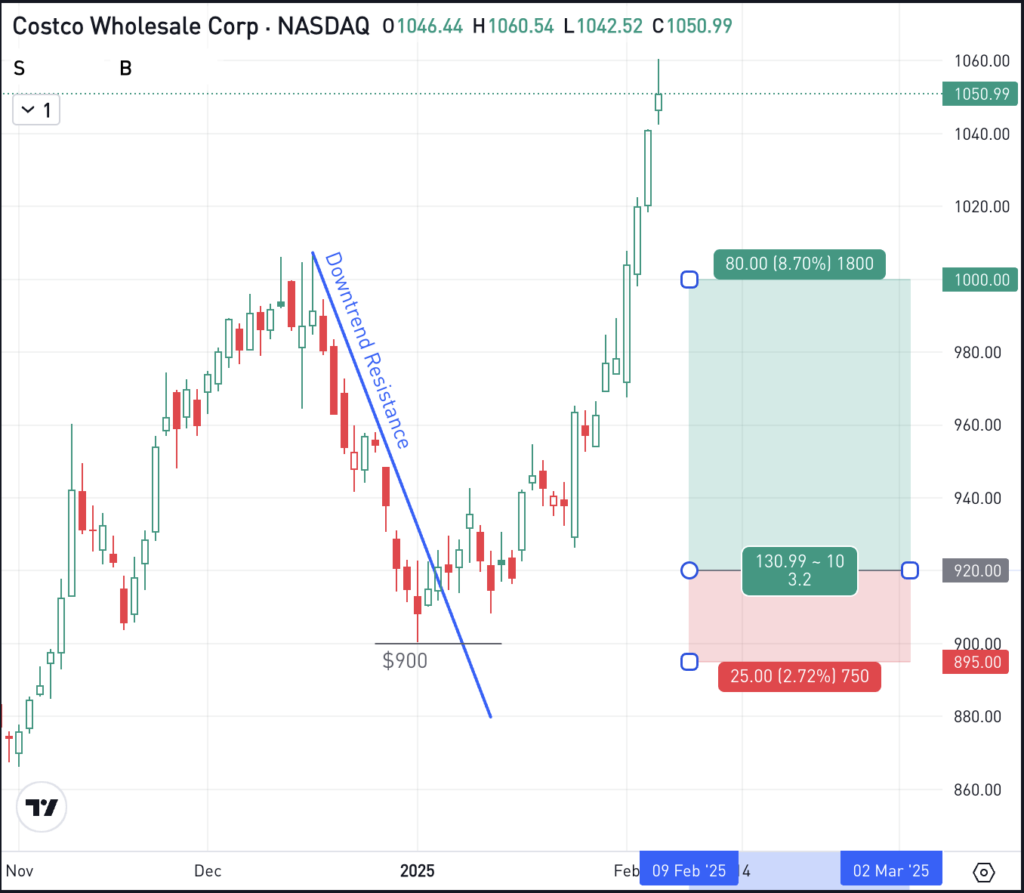[ad_1]
The Each day Breakdown seems to be at completely different hedging methods involving choices, inverse ETFs, and elevating money.
Friday’s TLDR
Hedging will be easy or sophisticated
An instance of when to take earnings with Costco
Hedge
With the current volatility and after a number of disappointing earnings reactions, some traders are exploring methods they will adapt or strategy markets when volatility shifts larger. That is smart after back-to-back years of 20%-plus beneficial properties within the S&P 500 and 120%-plus beneficial properties in Bitcoin.
Hedging
Buyers hedge to guard their portfolios from potential losses as a consequence of market fluctuations. As an illustration, if an investor is lengthy a inventory or ETF, they might search for methods to mitigate their publicity for a sure time frame — like after a big rally or earlier than an enormous occasion like earnings.
There are literally a number of methods to go about hedging.
First, “decreasing publicity” will be so simple as decreasing the place measurement. For instance, promoting 20% of the place retains an investor concerned within the place however lowers their publicity and strikes that capital into money — a safe-haven asset not vulnerable to volatility.
If an investor needs to hedge however doesn’t need to promote any of their positions, there are different concerns.
As an illustration, inverse ETFs — that are designed to go up when the underlying asset value goes down — can be found on common funds just like the S&P 500 or Nasdaq 100, in addition to a handful of particular person shares. A few of these funds even have a multiplier impact, such a 3x leveraged ETF. As an illustration, some common ETFs embrace SQQQ (3x leveraged Bearish Nasdaq 100 ETF) and the SOXS (3x leveraged Bearish Semiconductor ETF).
Warning: These ETFs don’t are likely to carry out properly over lengthy stretches of time and are meant as short-term buying and selling automobiles.
Lastly, hedging will be executed with choices. For these aware of these merchandise, put choices or put spreads will be bought to capitalize on a transfer decrease within the underlying inventory.
For instance, somebody who’s lengthy Apple might buy places or put spreads, which might revenue within the occasion that Apple shares transfer decrease. This could possibly be a speculative play from an investor who’s bearish or it could possibly be a hedge from somebody who’s lengthy.
You could find out extra about choices buying and selling with our free Academy programs and extra particularly, discover out extra about hedging right here.
Don’t Neglect the Greater Image
In the end, don’t neglect the larger developments which can be in play. Markets have executed fairly properly over the previous two years and the massive catalysts — like earnings progress and the economic system — stay on stable footing.
However that doesn’t imply we will’t have some durations of volatility or some pullbacks alongside the best way. Actually, it could be bizarre if we didn’t!
Lengthy-term traders can both endure these dips alongside the best way figuring out it’s a part of the journey, or they are often extra lively and attempt to mitigate these losses. There are not any free lunches on Wall Avenue, as hedging has its prices, too. However generally it may pay to be a bit defensive.
Wish to obtain these insights straight to your inbox?
Join right here
Managing the Commerce — Costco
This instance is for academic functions solely and shouldn’t be taken as recommendation.
I wish to have a look at Costco, a inventory we talked about in January. Shares have traded fairly properly since clearing downtrend resistance. This can be a good have a look at when a commerce works out properly.
Discover the chance/reward instrument we’re utilizing on the correct aspect of the chart. (On the charting web page, this may be discovered on the left-hand aspect beneath “Projections” and the instrument itself is known as “Lengthy Place”).

The instrument exhibits an entry at $920, with a cease just under the current low of $900. On this case, the stop-loss is at $895.
Buyers usually goal one thing like a 2-to-1 or 3-to-1 danger/reward ratio. That means that, for the $25 a share in danger the dealer is taking — reminiscent of on this Costco instance — they’re in search of a reward of $50 a share (in a 2-to-1 state of affairs) or $75 a share (in a 3-to-1) state of affairs.
In fact, a dealer can use no matter ratio works greatest for them. On this case, a transfer again to current resistance close to $1,000 was a little bit greater than a 3-to-1 danger/reward ratio.
Taking Earnings
If a rally of this magnitude was the dealer’s objective, they might take into account exiting the place fully or taking some revenue off the desk and doubtlessly elevating their stop-loss to guard their remaining revenue.
For those who do take some however not all earnings off the desk, do not forget that the inventory can carry on going — like Costco is doing proper now — or it may lose momentum and pull again, doubtlessly hitting the dealer’s stop-loss alongside the best way.
Disclaimer:
Please be aware that as a consequence of market volatility, a number of the costs might have already been reached and eventualities performed out.
[ad_2]
Source link




